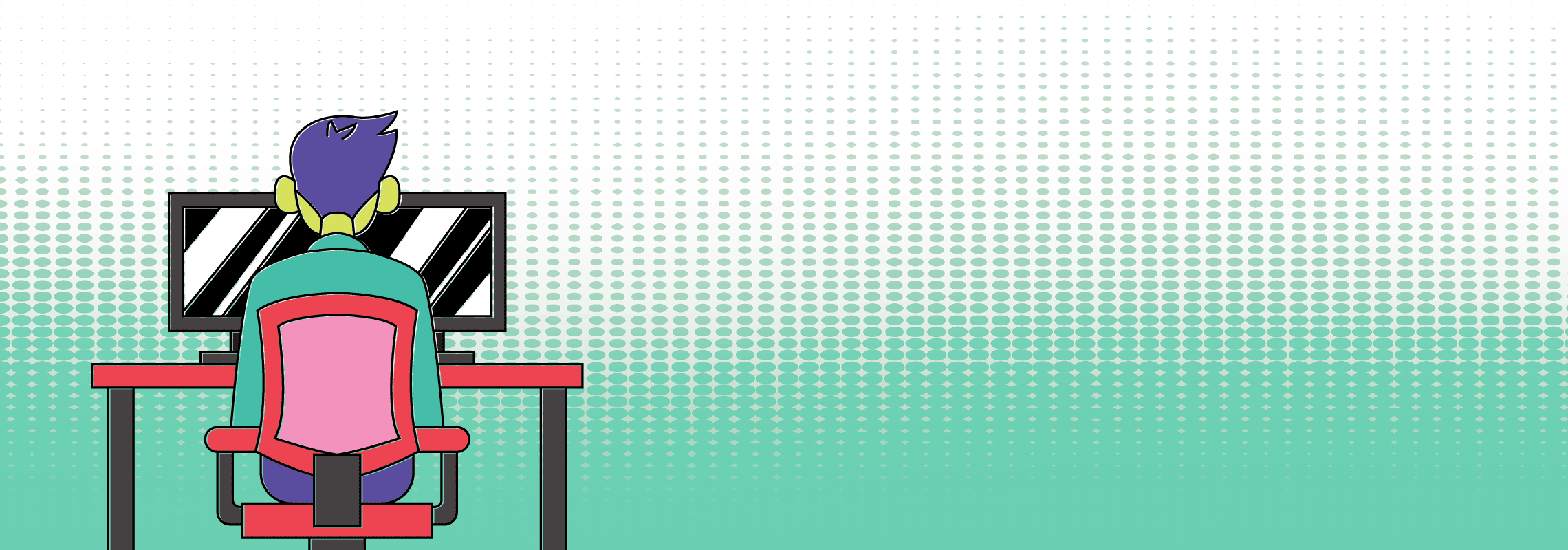Net-Work
Ashley Street

What does it mean to work in the digital age?
In Western culture, particularly in the United States, work is more than just a means of earning a living—it is a cornerstone of identity, self-worth, and how people define their place in the world. Historically, work was largely physical, with tasks carried out in person and employees commuting to centralized offices to produce goods and deliver services. As we transition to an increasingly digital world, the internet has woven itself into nearly every aspect of our lives—reshaping how we connect to our social networks, organize our schedules, navigate our cities, and so much more. While it is undeniable that these digital advancements have reshaped everyday life, their most profound impact has arguably been on the structure and nature of work.
The seeds of this transformation were planted in the 1980s with the emergence of the internet, but it wasn’t until the 1990s, as computers became more accessible, that businesses began to widely integrate it into their practices. This shift was further accelerated by the concurrent rise in personal computers in homes, setting the stage for the dramatic reimagining of how work could be done. The internet quickly replaced traditional methods like mail, faxes, and phone calls, reducing the need for administrative positions like secretaries and assistants to manage incoming messages. Tools like email, as well as cell phones and personal computers, made it possible for employees to communicate directly, fostering a more democratic, efficient workspace and gradually changing what work was available (ever heard of a typist?) However, while the emergence of the World Wide Web and digital collaboration tools further streamlined information sharing, it also began to blur the line between work and personal life—a trend that only intensified with the introduction of “smart” mobile devices like the BlackBerry. This ‘world’s smallest and most convenient email terminal’ created new expectations for availability, challenging employees to be accessible outside traditional work hours and sowing the seeds for a 24/7 work culture that persists today.

As the internet became ubiquitous, so did the ability to work remotely. Prior to the 2019 Covid pandemic, the vast majority of work was conducted in person in a traditional 9-to-5 office environment. While digital tools like email had become the standard method of communication, early video-call platforms like Skype were well-known but weren’t central to day-to-day work for most industries. Employees were expected to commute to the office, engage in ‘shooting the shit’ around the water cooler with coworkers, and brave the rush-hour traffic and mundane routines associated with traditional office work. When the pandemic hit, this familiarity was upended as offices around the world were forced to close. Almost overnight, remote work skyrocketed—from just 4% in 2019 to over 54% in 2020. Meetings quickly moved online, with Zoom emerging as the leading platform and Google and Microsoft accelerating the development of their video call services. Americans reported a 60% increase in screen time, spending significantly more hours on their computers and devices. At the same time, other channels of instant communication, like Slack, increasingly replaced email as the preferred communication tool within organizations, thanks to their convenience, the rise of mobile usage, and their more casual nature. (Slack feels and operates much more like texting than letter writing.) The shift to remote work that came after COVID was immediate and dramatic and, in a more considerable way, helped expose some of the deeper inefficiencies of the 9-5 office model. It fundamentally altered how work was done and ultimately laid the foundation for a more permanent shift in how we collaborate in professional environments.
“The shift to remote work that came after COVID was immediate and dramatic and, in a more considerable way, helped expose some of the deeper inefficiencies of the 9-5 office model.”
While most companies are no longer required to be remote, many have embraced remote structures as a permanent option, others offer hybrid models with “work-from-home” days. However, as with any major shift, these changes come with benefits and challenges. On the positive side, remote work has led to gains in productivity, improved employee morale, and better time management for many. With cloud technology and remote tools in place, businesses have become more resilient to external forces and are able to continue operating in special circumstances (like what we witnessed during COVID.) The broader implications of this change have opened new opportunities for organizations to diversify talent pools as employers and potential hires are no longer limited by geographic constraints. While this has intensified competition for desirable positions, it has led to increased opportunities. Professionals can now access positions that align more closely with their skills and interests regardless of location, as well as maximizing their salaries by living in lower-cost areas while working for companies based in higher-cost cities. For employees, eliminating daily commutes saves time and money and reduces carbon emissions, benefiting the environment and organizations’ sustainability goals. Most importantly, flexibility has become a key component of compensation packages, allowing employees to better balance work with personal responsibilities, family care, and healthier lifestyles.
Yet, remote work also presents challenges, particularly as the boundaries between work and home life blur. While many remote workers report increased productivity and praise the flexibility of working from home, others have experienced the opposite effect, with increased pressure to be “always on.” Even though collaboration with teammates, coworkers, and clients seems constant, many remote employees feel they receive less human interaction, which can lead to feelings of isolation. And while digital tools like Slack enable quick communication, they often fall short of fostering the emotional connections that naturally develop in physical office environments. The absence of in-person interactions and spontaneous feedback makes it harder for remote workers to cultivate mentorship relationships and build rapport with colleagues; employees who work remotely do not benefit from the “power of proximity,” a phenomenon that describes how physical closeness fosters more frequent social interactions and enhances emotional connections.

Meanwhile, on the other side of the internet, the shift towards remote and digital work has created new industries altogether. Social media and digital content platforms like Instagram, YouTube, and Twitch have elevated influencers, content creators, and streamers into legitimate—and often highly lucrative—career options. A recent poll by NPR in 2023 revealed that 1 in 4 Gen Z respondents (ages 13-26) aspire to become content creators. And it’s not just teenagers—surveys by influencer agencies have found that 54% of American respondents aged 18-60 would quit their current jobs if they could make a living as full-time content creators or influencers. Likewise, the gig economy—supported by mobile apps like Uber, Lyft, DoorDash, Instacart, freelance platforms like Upwork and Fiverr, and others such as Airbnb— provided income to nearly 10 million Americans in 2024, with half of them using gig work as a supplement to full-time employment. For many, these gig and digital roles offer an alternative to traditional employment, making independent work a viable career path.
Today, as AI emerges as the next frontier, the nature of knowledge work stands poised to evolve once again. While we are just beginning to understand the applications of AI enabled technology, these tools can already automate an array of complex human tasks including problem solving, decision making, analytics, and mathematics as well as creative work such as writing, drawing, coding, and 3D modeling, signaling another wave of transformation in the types of work that are possible. The possibilities feel endless, but it is clear that it too is likely to fundamentally change what it means to work, just as mobile devices and digital tools have in the past 30 years.
As technology has created new roles, enabled greater flexibility, and given rise to entirely new industries, work is no longer confined to the physical office or a 9-to-5 schedule. In redefining what work is and how it is done, its form has largely shifted from physical labor to digital presence, from centralized offices to flexible, borderless networks, and from traditional careers to new forms of digital entrepreneurship. As we navigate this evolving landscape, one question remains: what does it mean to work in the digital age?
Sources
How the 90s changed technology – Archives of IT
BlackBerry smartphones: what impact did they have on the workplace? – HR Magazine
What We Know About the Effects of Remote Work – The New York Times
Unhealthy at Home | UCLA Fielding.
Does working from home make employees more productive? – The Economist
The 24-Hour Work Cycle: Navigating “Always on” Culture · Worklife Blog
Why do so many young people want to become influencers? : The Indicator from Planet Money : NPR.
It’s not just the kids. Half of American adults want to be influencers. – Tubefilter
20 Gig Economy Statistics for 2024: The State of Gig Work – Finmasters



